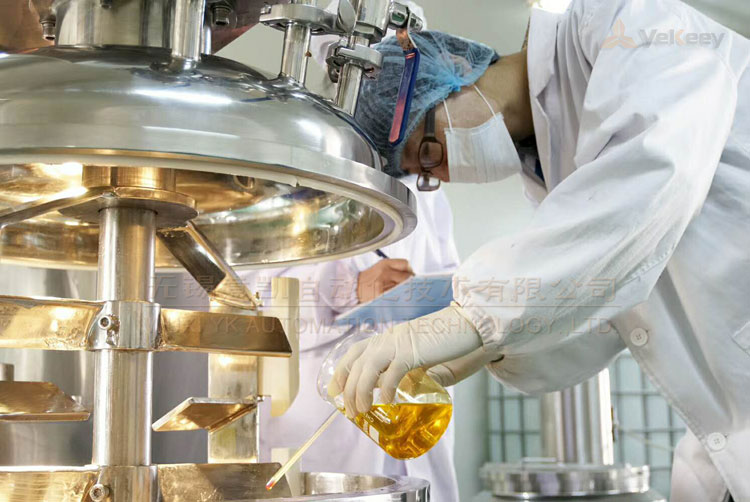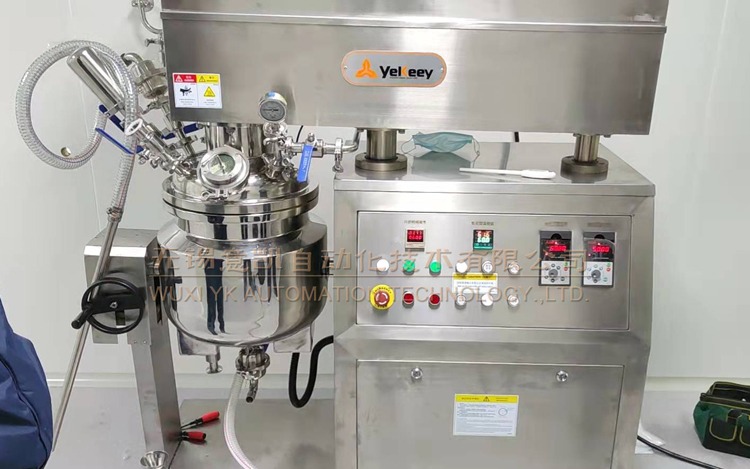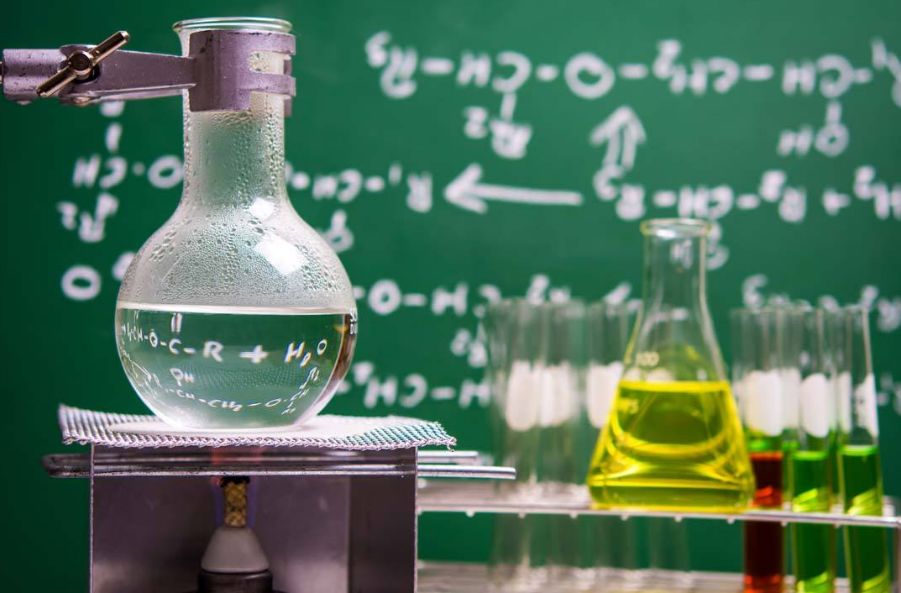We often receive such orders. For example, after the customer purchases the laboratory emulsifier mixing machine, after a period of time, we will receive an order from the customer to purchase the pilot-scale emulsification mixer equipment. These orders are generally produced by the customer’s process scale-up. Usually, formulations and processes are developed on a laboratory scale, with batches of about 1 to 10 kg, and will be transferred to large-scale production equipment with batches of 1000 kg and above after the development is completed. In general, the batch size is only increased by 10 times, for example, from 10 kg to 100 kg, and from 100 kg to 1000 kg.
Let’s take a look at the problems that need to be paid attention to in-process enlargement.
Some Constraints in Scaling up The Process
When developing an unfamiliar recipe or scaling up the process, be aware that the production of that process or product may become unpredictable in larger batches and therefore pose significant risks. The development of accurate and complete scale-up models based on parameters is essential if such events are to be completely avoided throughout the life of the product. A closer look at the individual steps of the process reveals that when batches are multiplied by 10, all dimensions and elements do not necessarily increase in the same proportions.
In reality, it is more difficult to accurately calculate scale-up due to some constraints. For example, electric motors on the market have only a few specific speed ratings and cannot record performance increments. Even though the motor is custom-made from the parts list, only some sizes are available. In addition, the geometric structure, mechanics, and multiple product-specific features of motors produced by different manufacturers will also affect the calculation, so the calculation, in this case, is not accurate and can only be an approximate result.
The Most Common Problem in The Process
The most common problem in process scale-up is the change of reaction selectivity, which can affect the yield and purity of the product, mainly due to the mixing effect of the small scale and the production inconsistency.
If the impact of the rotational speed has been evaluated in the small test, the cause will be quickly found when there is a problem. The emulsification reactors in the pilot plant are equipped with frequency conversion speed regulation, and appropriate adjustments can be made to determine the appropriate rotational speed. In the laboratory, due to the small volume of materials and good stirring efficiency, the problems of heat transfer and mass transfer are not obvious. However, when the pilot scale is enlarged, due to the influence of stirring efficiency, the problems of heat transfer and mass transfer are prominently exposed.
Therefore, during the scale-up of the pilot scale, attention must be paid to the study of the type of agitator according to the properties of the material and the characteristics of the reaction, and the influence of the stirring speed on the reaction law must be investigated, and suitable stirring speed. Avoid complexity in process development and scale-up to be as simple as possible, the simpler the less chance of process error. The availability of emulsification mixer equipment needs to be considered when the API process is scaled up. The following six points should be paid attention to when evaluating the availability of emulsifier mixing equipment:
The availability of emulsification mixer equipment needs to be considered when the API process is scaled up. The following six points should be paid attention to when evaluating the availability of emulsifier mixing equipment:
- Whether the mixed state meets the process requirements;
- What is the minimum feeding solvent of the reaction equipment;
- Whether the heating medium has temperature indication and can be controlled within the range of process requirements;
- Whether the temperature of the dripping point can be controlled (whether the dripping reaches a sufficiently low temperature, whether the dripping is sufficiently diluted, whether the dripping position is at the maximum stirring position, whether the distribution of the dripping meets the process requirements, etc.);
- Whether the reaction equipment has achieved the degree of cleaning and drying required by the process;
- Whether the reaction equipment has reached the sealing degree required by the process.
Various Equipment Required Should Be Considered
In fact, the optimal reaction conditions obtained in the laboratory stage may not necessarily meet the requirements of pilot scale-up. When starting the pilot scale-up, the materials and types of the various equipment required should be considered, and whether they are suitable, especially the selection of materials for equipment in contact with corrosive materials. The small-scale, pilot-scale, production, and large-scale production of various series of emulsification mixer equipment of YeKeey fully consider the influencing factors in their specifications and configurations.
Such as the feeding method in the exothermic reaction is more convenient to control the feeding speed; the heat transfer area and heat transfer coefficient of the emulsification reactor, as well as the refrigerant and other factors, are carried out in in-depth experimental research. Master the changing laws of equipment when these elements are enlarged, and through rigorous and scientific data calculation, to obtain more appropriate corresponding specification settings.
The setting of the corresponding structure, specification, and configuration based on this can be very friendly to carry out the connection between small test, pilot test, production, and large production. At the same time, at YeKeey, customers can test samples or improve and adjust the process in the professional equipment equipped with the 100,000-level purification laboratory, test any type of machine, or conduct scale-up and production batch testing. At the same time, customers receive expert advice and support on technical equipment and extended functions. Through sustainable and innovative solutions, YeKeey drives customers’ immediate success and helps them shape tomorrow’s markets.








